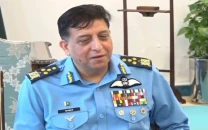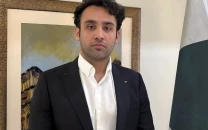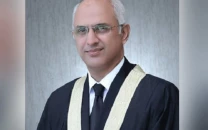Technology and the Metro Bus
The Metro Bus is run by a sophisticated set of IT systems, each carefully tweaked, according to our requirements.

The writer worked as the Chairman of the Punjab Information Technology Board. He holds a PhD in computer science by the University of Cambridge
The Metro Bus is run by a sophisticated set of IT systems, each carefully tweaked, according to our requirements. For instance, our AFC system employs reusable RFID tokens, rather than the magnetic tickets used at the London Underground. Magnetic tickets need to be printed for each new journey and cost between two to three rupees. For keeping the fares affordable, we needed a solution that does not incur additional costs of printing tickets. Furthermore, magnetic tickets use mechanical ticket dispensation machines, which would have had a high failure rate in our dusty outdoor environment. Therefore, the Metro Bus uses contactless RFID plastic tokens for one-time rides. The riders simply show the token at the entry turnstile and deposit them at the exit turnstile so that they can be recycled in the system. This also subtly enables the system to measure the distance travelled by each rider and provides the mechanism for distance-based fare collection in future. Regular riders can use smart cards, which will also allow the government to implement special fare policies for students, senior citizens and frequent travellers.
The Metro Bus system uses automatic ticket-vending machines. This is the first use of ticket-vending machines in Pakistan. These machines can be used for both buying tokens and recharging smart cards. When we were designing the e-ticketing system, we remained apprehensive of the uptake of such technology by riders on this route. Within three weeks, we have all been left amazed by how quickly people have learned to use the system. The entire system — including ticket-vending machines, PDA ticket rechargers and turnstiles — is equipped with GPRS SIMS, in case the primary fibre link fails. The seamless switchover ensures that our fare collection system keeps working despite power cuts and disruptions in connectivity.
An important ingredient for long-term success of the project is the ability of the system to maintain a strict bus schedule. For this, each bus is equipped with an on-bus-unit (OBU) that communicates with a central bus scheduling system. The location and speed of each bus is tracked in real time and drivers are continuously updated about information to help them maintain their scheduled headway. The OBUs also communicate with a central system that automatically generates announcements of bus schedule for the passengers.
The Lahore Metro bus system uses a dedicated corridor for all but eight locations, where the bus must cross a signal used by other traffic. The Intelligent Transport System (ITS) used by the Metro Bus is based on an adaptive signalling mechanism. The ITS traffic signals monitor approaching buses, as well as the length of queue of regular traffic at signalled junctions. As soon as the system detects an approaching bus, it attempts to give it a green-wave but simultaneously adapts the signalling frequency to maintain an acceptable length of queue for regular traffic.
In order to enable at-grade boarding of buses from elevated stations, the Metro Bus system uses a precision docking system, synchronised with automatic sliding doors. The stations are equipped with sensors that detect an approaching bus and open the sliding doors as soon as the bus is precision docked. This helps prevent accidents at the time of boarding of buses and facilitate passengers.
Finally, the entire Metro Bus system uses 338 cameras to monitor the entire 27-kilometre corridor, traffic junctions and bus stations. Live video-feed from these cameras is streamed to our central command centre. The team monitoring the system uses this for security surveillance and manual overrides, when necessary.
By the way, today’s count was 143,879!
Published in The Express Tribune, March 24th, 2013.


















COMMENTS
Comments are moderated and generally will be posted if they are on-topic and not abusive.
For more information, please see our Comments FAQ